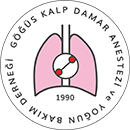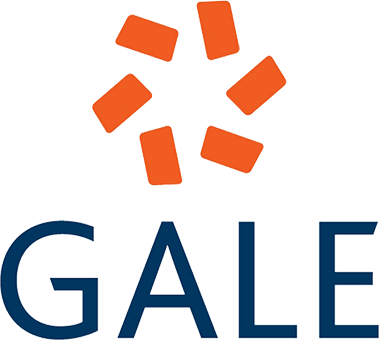

Açık Kalp Cerrahisi Yapılan Hastalarda Standart Endotrakeal Tüpleri ile Subglottik Drenajlı Endotrakeal Tüplerin Postoperatif Nosokomiyal Pnömoninin Gelişimine Üzerine Etkilerinin Karşılaştırması
Zeki Talas1, Tülay Çardaközü2, Emel Azak3, Sibel Gür11Kocaeli Üniversitesi Tıp Fakültesi Kalp Ve Damar Cerrahisi Anabilim Dalı, Kocaeli2Kocaeli Üniversitesi Tıp Fakültesi Anestezi Ve Reaniamsyon Anabilim Dalı, Kocaeli
3Kocaeli Üniversitesi Tıp Fakültesi Enfeksiyon Hastalıkları Anabilim Dalı, Kocaeli
GİRİŞ ve AMAÇ: Postoperatif nazokomiyal pnömoni (PoNP), ise ameliyattan 48 saat sonra gelişen pnömoniler için kullanılır. PoNP riski, endotrakeal tüp (ET) kullanıldığında 3-20 kat daha fazla görülür. Bu nedenle, subglottik sekresyona izin veren drenaj lümenli ETler üretilmiştir (SSD-ET). Kalp cerrahisi sonrasında PoNP riski yüksektir. Literatürde hızlı kardiyak anestezi protokolü uygulanan hastalarda SSD-ET ve VAP ile ilgili sınırlı sayıda çalışma vardır. Çalışmamızın amacı, hızlı kardiyak anestezi protokolleri uygulanan açık kalp ameliyatı geçiren hastalarda SSD-ETnin ekstübasyon süresi üzerindeki koruyucu etkisini ve PoNP gelişimini karşılaştırmaktır.
YÖNTEM ve GEREÇLER: Prospektif, kör olmayan, randomize bir çalışma planlandı. Açık kalp cerrahisi planlanan hastalar, Standart Tüp Grubu (Grup 1) veya Subglottik Aspirasyon Tüpü Grubu (Grup 2) almak üzere rastgele iki gruba ayrıldı. Çalışmaya 60 hasta dahil edildi. PoNP tanısı, 2015 Hastalık Kontrol ve Önleme Merkezleri (CDC) (1) tanı kriterlerine göre belirlendi. İki yönlü p değeri <0.05 istatistiksel olarak anlamlı kabul edildi.
BULGULAR: SSD-ET grubunda ekstübasyon süresi 12.65 saat, S-ET grubunda 16.88 saat olarak belirlendi. Bu nedenle, SSD-ET grubunda ekstübasyon süresi önemli ölçüde daha kısadır (<0,027) saptandı.
TARTIŞMA ve SONUÇ: Çalışmamız, açık kalp ameliyatı geçiren hastalarda SSD-ETlerin PoNP gelişimini doğrudan etkilememekle birlikte ekstübasyon süresini kısalttığını göstermiştir.
Anahtar Kelimeler: Subglottik sekresyon tüpleri, Açık kalp cerrahisi, Postoperatif nazokomiyal pnömoni
Comparison of Standard Endotracheal Tube and Endotracheal Tube with Subglottic Secretion Drainage in Patients Undergoing Open Heart Surgery; Risk of Developing Postoperative Nosocomial Pneumonia
Zeki Talas1, Tülay Çardaközü2, Emel Azak3, Sibel Gür11Kocaeli University Faculty Of Medicine, Department Of Cardiovascular Surgery2Kocaeli University Faculty Of Medicine, Deparment Of Anesthesia And Reanimation, Kocaeli
3Kocaeliuniversity Faculty Of Medicine, Department Of Infectious Diseases, Kocaeli
INTRODUCTION: Postoperative nasocomial pneumonia (PoNP) is the pneumonia that develops 48 hours after the surgery. The risk of PoNP is 3-20 times higher when endotracheal tube (ET) was used. Therefore ETs with drainage lumens allowing subglottic secretion were produced (SSD-ET). The risk of PoNP has increased in cardiac surgery. There are limited number of studies on SSD-ET and VAP in the literature on patients under going fast-track cardiac anesthesia protocol. The aim of our study is to compare the protective effect of the SSD-ET on the extubation time and the development of PoNP in the patients having open heart surgery under going fast-track cardiac anesthesia protocols.
METHODS: A prospective, non-blind, randomized trial was conducted. Patients scheduled for cardiac surgery were randomly assigned to receive Standart Tube Group (Group 1) or Subglottic Aspiration Tube Group (Group 2). 60 patients were included in the study. The diagnosis of PoNP is determined according to the diagnostic criteria of 2015 Centersfor Disease Control and Prevention (CDC)(1). A two-sided p-value <0.05 was considered as statistically significant.
RESULTS: Extubation time was 12.65 h in group SSD-ET, it was revealed as 16.88 h in the S-ET group. Hence, the extubation time was significantly shorter in the SSD-ET group (<0.027)
DISCUSSION AND CONCLUSION: Our study has showed that SSD-ETs decreased the extubation time in patients who underwent open heart surgery, although they did not directly affect the development of PoNP
Keywords: Subglottic secrerion tubes, Open heart surgery, Postoperative nasocomial pneumonia
Makale Dili: İngilizce
(1087 kere indirildi)

















